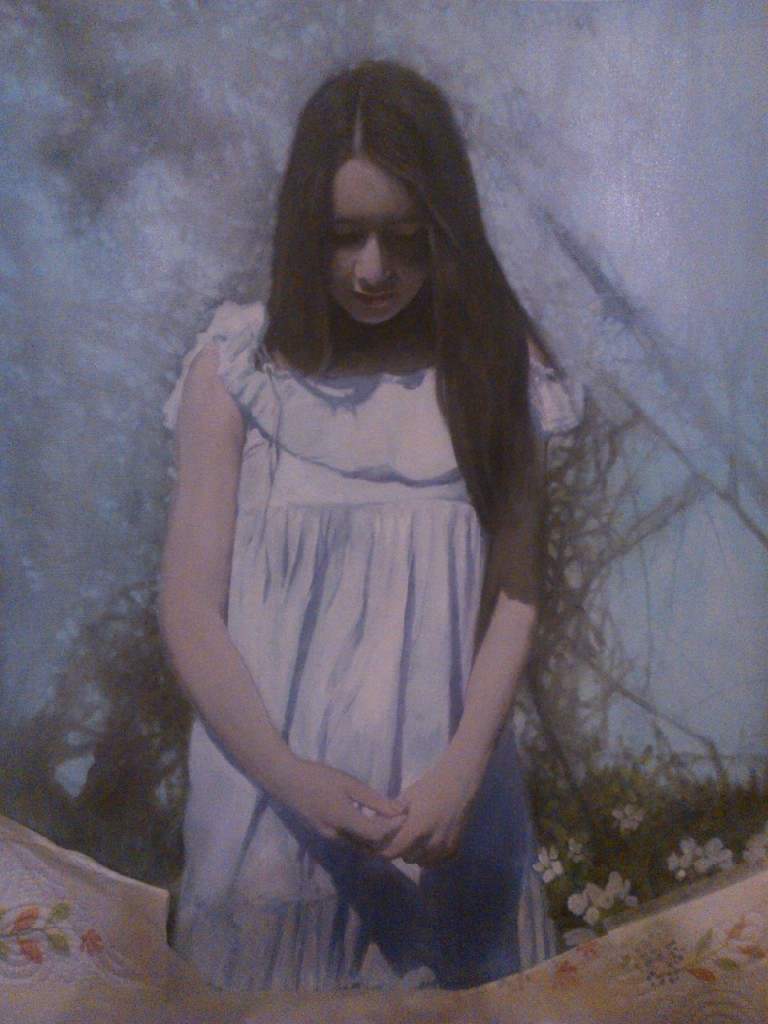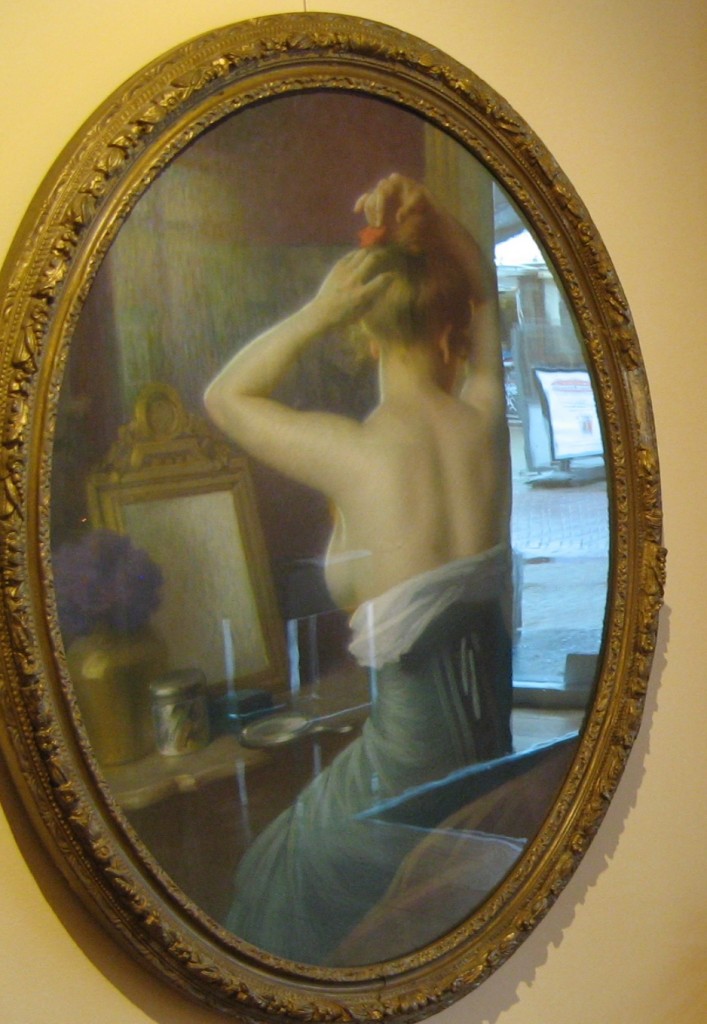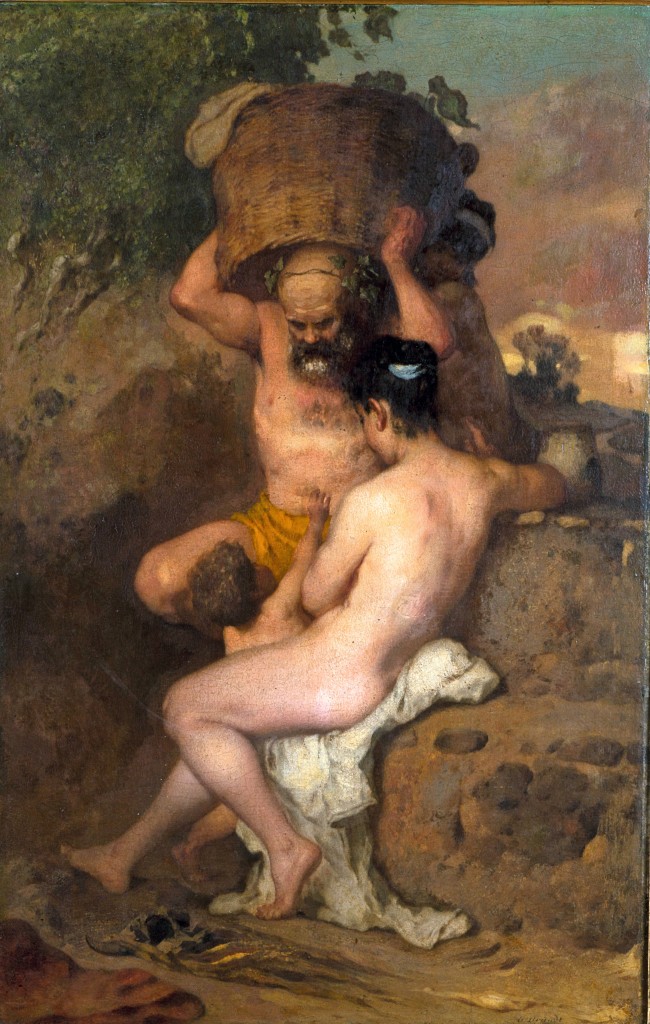In Bloom (6 to 27 April 2016)
Barbette’s theme-exhibition ‘In Bloom’ is a tribute to the blossoming quality of feminine nature, wishing to expose it’s
sunshiny bright side as well as the darker, more capricious corners.
In this exhibition we pay homage to different ideas and symbols of ‘blooming’ femininity in culture and nature.
Let’s take a closer look at our first exhibit piece:
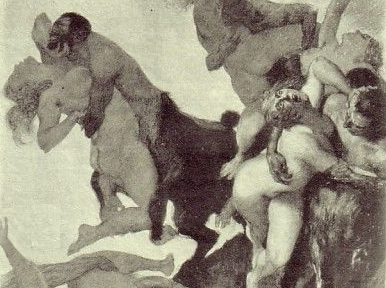
Satyrs on a Raid by Norman Lindsay (1879-1969) is a collotype of a wash drawing that was used as an illustration to ‘Satyrs and Sunlight’ published in 1928 by The Fanfrolico Press in an edition of 550 copies. Norman Lindsay is an Australian artist & sculptor famous for his etchings and book illustrations.
In the picture a group of luscious women resist a is kidnapped by a group of Satyrs on a rampage.
Collotype, Image size 19×15.5cms
“I knew I had fallen in love with Lolita forever; but I also knew she would not be forever Lolita.”
― Vladimir Nabokov, Lolita
Everyone knows the notion of the Lolita, and while her whole poetic being is inspiring and will take you into many recesses of the mind; some glorious, some… of a slightly more sinister temper, it stands true that even the Lolita, or should I say, especially the Lolita, is human, (If anything becomes heart wrenchingly clear in Nabokov’s story, it would be that), but she gets to battle a very conflicting war on a daily basis. She is attacked, loved, misunderstood, underestimated, overestimated, crucified and put on a pedestal. This notion has fascinated me for a long time because after Lolita-hood this destiny doesn’t suddenly dim or fade out, in some cases it even grows stronger and brighter.
By highlighting Lolita in this exhibition i wish to recognize the rare feminine creatures who don’t go from caterpillar to butterfly overnight, but get flung into the danger zone of Lolita-hood while transitioning from child to woman, for they are, though it may be a relatively short period, forever marked by this life experience.
In Bloom (75×52,5cm, oil on canvas) by Elena Cermaria (1976).
Antony Troncet (1879-1939) studied at the École nationale supérieure des Beaux-Arts and the Académie Julian. His masters were Benjamin Constant and Jean-Paul Laurens. Next to painting and drawing he also wrote poetry.
In La Toilette he expresses the elegance of a lady preparing herself for a night on the town.
In the hands of an experienced artist there’s nothing quite like pastel as a drawing material to imitate the flesh tones of human skin. Troncet, a true master in this aspect, gives the hands, back and neck of his model a palpable air, and embellishes her with a special grace as he captures the moment she decides to wear her hair up.
The pastel is still in the beautiful frame it was exhibited in at the “Société des Artistes Français” in the 1920’s. The paper shows some wrinkles in the left corner but is otherwise in great condition.
Troncet stayed true to a traditional style of painting in an era when experimentation was the norm. The last few years show a strong reaprecciation of his craftmanship and artistic vision.
Pastel on paper, oval 97x80cm. Price on request: contact@barbette.nl
Otto Brandt was born 1828 in Berlin and died in 1892 in Olevano Romano. During his studies at the Royal Prussian Academy of Arts in Berlin 1843-1851, Brandt took his first exhibitions in Berlin and Konigsberg. In 1850-1852 he worked as an illustrator in Berlin. In 1850-1856 he participated in the Berlin Academy exhibitions to 1853 he was in Paris, where he studied in the studio of Léon Cogniet. In 1854 a resident in Rome, Brandt worked primarily as a genre and landscape painter.
The painting at display at our exhibition: Dioniso implora Sileno per le uve was likely painted in Rome. The subject matter is unusual, but can be identified after some deliberation. According to Greek legend Dionysys discovered the intoxicating qualities of wine in his childhood at the fictional Mount Nysa and had him teach the practice to the peoples of central Anatolia. In the painting the persistent infant has dropped his goat-skin cloth (foreground) and rushes to the older, but still athletic Silenus to beg for grapes. One of his steph-mothers is presiding over the incident.
Dioniso implora Sileno per le uve [Oil on Panel, 70x40cm].
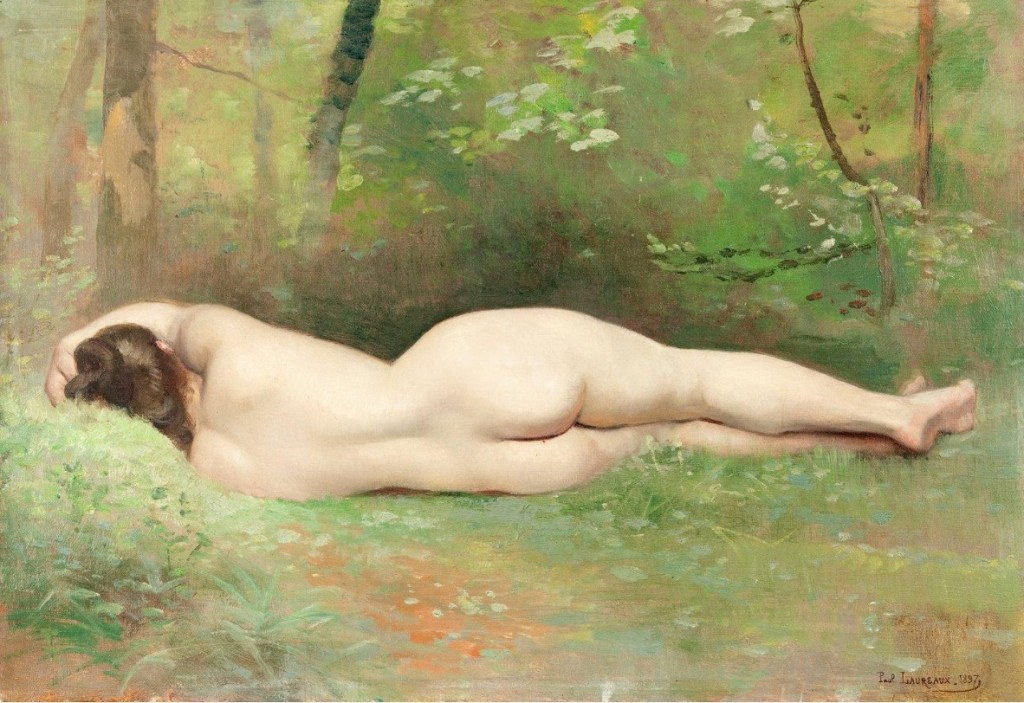
In Femme Endormie by Paul Laureaux (1847-1909) a female figure is shown in natural (though not quite her natural) surroundings. This painting is a small masterpiece by a largely unknown painter from France. The young woman in a spot of greenery has a surreal quality, but the brushwork is convincing and beautiful . The soft skin of his model contrasts with the almost violently green background, were he has painted the leaves with a impressionistic touch. The glare of sunlight that comes through the trees and softly lights up the foreground is magical.
Femme endormie [Oil on canvas, 38x55cm]
